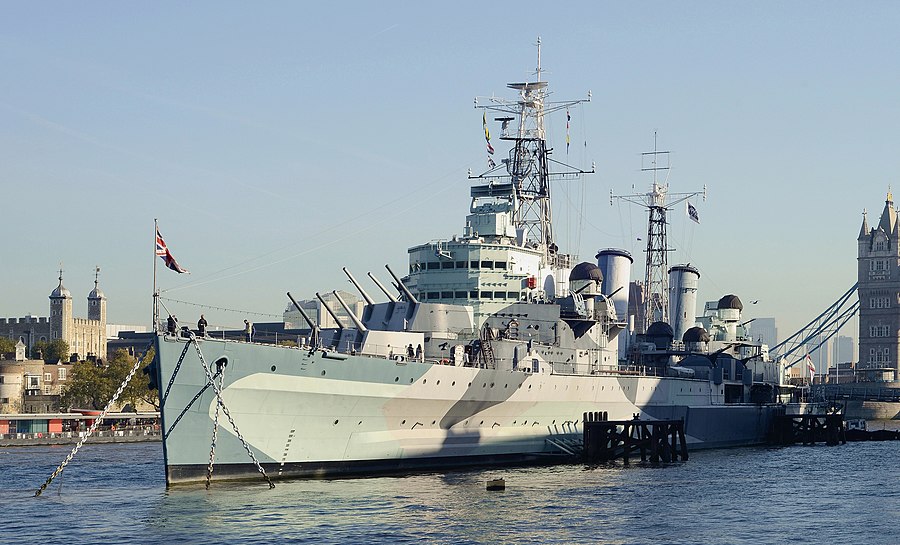Facts About HMS Belfast
HMS Belfast is a historical gem, a Town-class light cruiser constructed for the Royal Navy in the late 1930s. This illustrious ship played a pivotal role during World War II, participating in crucial operations such as escorting Arctic convoys, the Battle of North Cape, and supporting the Normandy landings. Her service did not conclude with the war; HMS Belfast continued to operate in the Far East during the Korean War and even underwent significant modernization in the late 1950s.
By 1967, there emerged a strong desire to preserve HMS Belfast as a museum ship. In 1971, she was transferred to the private HMS Belfast Trust, which dedicated itself to her preservation and maintenance. Their efforts were successful, and later that year, HMS Belfast opened to the public as a museum ship in London, managed by the Imperial War Museum.
Today, HMS Belfast is a cherished tourist attraction, welcoming over 250,000 visitors annually. Preservation has been a continuous endeavor, involving multiple dry dockings and restoration projects to ensure she remains in excellent condition. In 1978, HMS Belfast officially became part of the Imperial War Museum, solidifying her status as a vital branch of the museum and an educational resource.
Visitors to HMS Belfast can explore various sections of the ship, from daily life on board to the internal machinery below the waterline and the action stations on the upper deck. The exhibits and interpretations provide a captivating insight into the ship's role during both wartime and peacetime.
Standing proudly in London, HMS Belfast is more than just a ship; she is a landmark and a living piece of history. She continues to partake in events and undergo restoration projects, ensuring her legacy as a national historic asset endures for future generations to appreciate and learn from.

 Ireland
Ireland